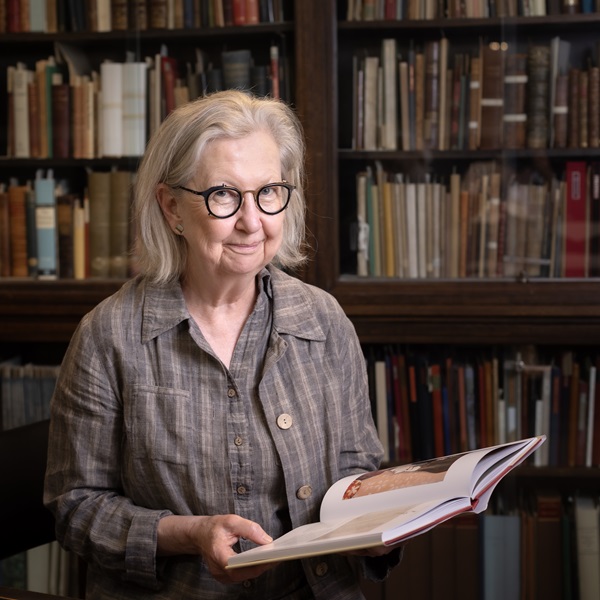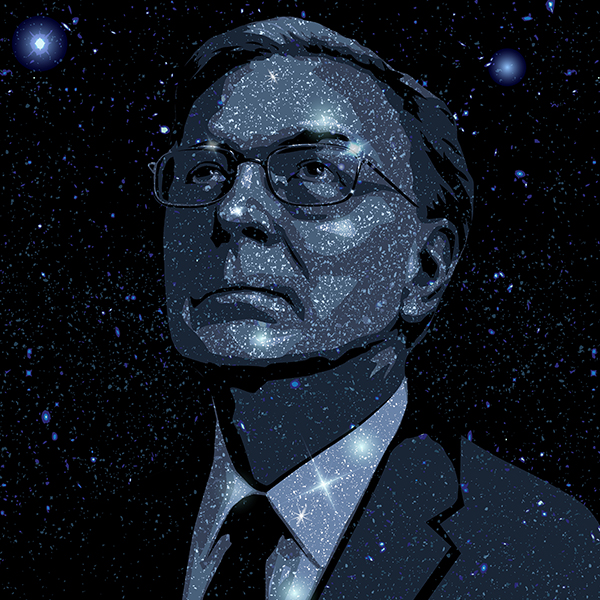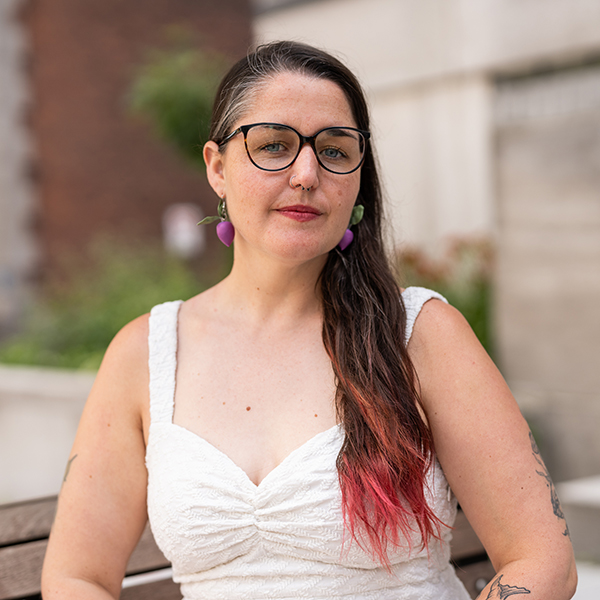The subject matter of Todd Meyers’s new book hits close to home for the author – in a literal way. Gone Gone deals with the multifarious and ongoing impact of the opioid overdose crisis as it plays out in Montreal’s East End, Meyers’s own neighbourhood.
Chatting with the voluble Meyers, an anthropologist and McGill’s Marjorie Bronfman Chair in Social Studies of Medicine, in the cafe of La Grande Bibliothèque about his book was fitting. We were not far from Hochelaga-Maisonneuve, where his fieldwork for Gone Gone took place and the district where Meyers has put down roots with his partner and their two kids.
His emotional investment in his home turf and its people is palpable, while Gone Gone’s deftly crafted prose, intersecting at times with the compressed power of minimalist poetry, is clearly the hallmark of a writer willing to take creative risks in finding the best way into his material.
Meyers is pursuing nothing less than a new way to discuss two of the defining subjects of our time: the opioid crisis and its all-too-frequent aftermath, grief. As he writes in his introduction, Gone Gone seeks to “add a tiny but dense counterweight to writing that places the political economy of addiction ahead of the veracity of loss.”
Meyers is working largely uncharted territory, not only thematically but formally. Try to file Gone Gone in a tidy genre slot and you’ll find yourself tripped up repeatedly; “literary non-fiction” feels too broad. “Ethnography”, while probably technically accurate, gives no hint of the accessibility and sheer readability on display. The underpinning architecture of academic enquiry is here, felt more than seen. But really, some new name is needed.
‘Something different from straight reporting’
“I wanted to write a story of grief that was between people, as opposed to an atomized series of individual portraits, and I wanted to demonstrate the force of that interconnectedness narratively,” he says. “Some of the encounters are brief, while some are contacts spread over long periods—and of course, people change over time. So, it’s not just a cross-section of particular moments, it’s moments on top of moments. It produces something that’s different from just straight reporting.”
“One woman said she could no longer go past the bus stop where they found her [overdosed] partner. Her everyday geography completely changed.”
Professor Todd Meyers
Meyers poignantly conveys the jagged complexity of grief. “Catherine’s children were taken from her a year before she passed. she died in that moment; all the rest was postscript.”
On a practical level, the approach known in academic circles as snowball research was employed in researching the book, wherein subjects accrue organically through contact with other subjects as opposed to being specifically chosen in advance.
As for his interlocutors, Meyers says, “I wanted to talk to people who weren’t necessarily substance users, but have been touched by overdose. That was probably the hardest part of writing the book: to keep the focus on those who survived, and their lives. What’s the aftermath? What does survival look like? How do the survivors themselves define it? How do they inhabit it day to day? What is the intensity of grief?”
Gone Gone shows how incidents, places and moments can deeply be significant for one or two individuals, but utterly meaningless to everyone else. Questions arise that may never have occurred to most readers. For example, when someone dies of an overdose, what happens to their phone plan?
Elsewhere, attention is drawn to a small group of people who cluster around the vents at Prefontaine Metro on cold days, availing themselves of the warm air currents from below. Some who are familiar with that part of the city might recognize this scene, but others might not. A subtle shift in the way we view our surroundings makes itself felt. Compassion and empathy are given access to a topic that all too often gets bogged down in dry statistics.
The ’professional stranger’
“There were so many stories that were so prosaic but clearly meant an enormous amount to the people telling them,” says Meyers. “One woman said she could no longer go past the bus stop where they found her [overdosed] partner. Her everyday geography completely changed.”
His previous book, All That Was Not Her, followed the fitful progress of a woman fighting to keep a household together in inner-city Baltimore. Establishing a rapport with his subjects doesn’t come without its special challenges, says Meyers.
“I have to say that I still feel, in many ways, like I’m learning how to be an anthropologist. I still feel awkwardness every time I sit down to talk with someone or have a conversation in passing. The idea of the ‘professional stranger’, which is how Michael Agar described the role of the anthropologist, for me is still elusive. I always feel like I’m trespassing a little bit in that exchange.
“But even with all of the missteps and awkwardness, people in almost every case are giving of their time and genuine with the things they say. And for people who are moving through a world where they are suffering, trying to manage something that is unmanageable, to be able to pause for a second and talk to some academic about that experience for reasons unknown…that truly is generous.”
In the classroom, Meyers has been finding that fieldwork and writing feed into his teaching in ways that sometimes surprise him.
“I’m reading the book with the fourth-year medical students in my Medicine and Society course section,” he says. “Our section is entitled The Patient in the First Person. I’m already so impressed by the ways they’re attuned to the complicated lives of those they encounter in the clinic that I wanted to extend that into a conversation about the complexities of loss.”
Finally, given that books take on many lives of their own when they go out into the world, it felt fair to ask Meyers what he hopes readers — in the classroom as well as further afield — might take away from Gone Gone.
“I hope readers carry the sense of grief’s unfinished work with them when they put down the book. This crisis isn’t leaving us any time soon, and the pain and grief that surrounds it aren’t going anywhere either. I suspect most readers already know this. But finding ways to sit with these hard things feels like what they deserve.”


